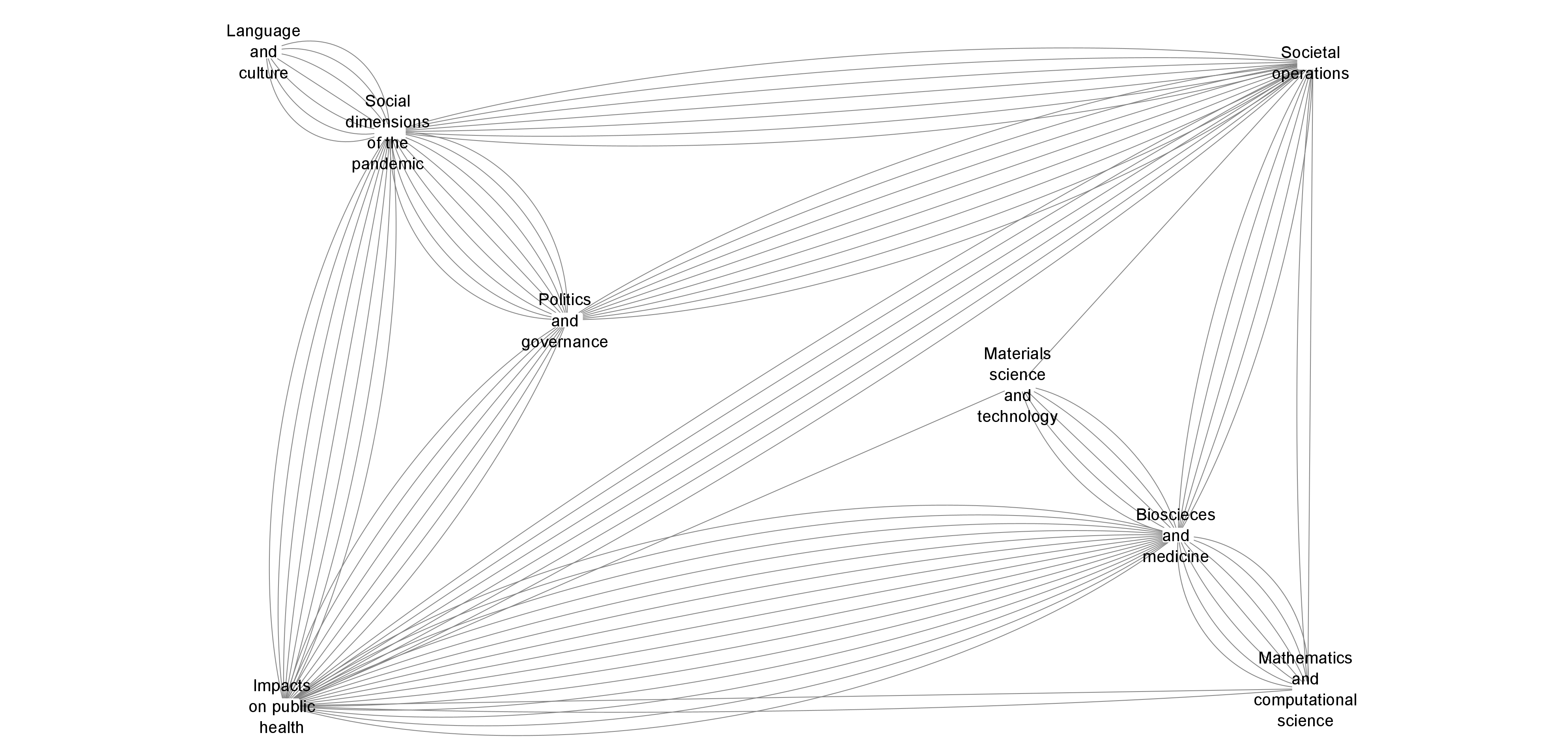How did the focus of Covid-19 research change from 2020 to 2021?
The Academy of Finland has investigated how the visibility of the Covid-19 pandemic has changed in the applications submitted to the Academy. The results show that Covid-19 research has begun examining the pandemic as a wider societal phenomenon. The focus of the applications is often on studying the impacts of restrictions, for example.
During the year 2020, the Covid-19 pandemic and its repercussions became a new research topic both in Finland and around the world. Based on the applications sent to the Academy of Finland, we have carried out an analysis to examine the new research questions brought on by the pandemic. We analysed which research fields the research questions were related to and which perspectives the researchers had come up with to find out answers. Our aim was to identify wider themes that related to the pandemic that many researchers had prioritised in the applications.
An earlier analysis, How have Finnish researchers reacted to the COVID-19 pandemic and its consequences?, showed that researchers highlighted research questions concerning Covid-19 in health sciences and social sciences alike.
In 2021, some of the research questions that were posed in 2020 were not pertinent anymore. Either the answers had already been found, or researchers had begun prioritising other questions because of how the pandemic evolved.
Alongside the questions that have remained important since 2020, new research questions and research areas were identified by the researchers.
Focus of applications concerning Covid-19 has shifted to the impact of the pandemic and its repercussions
Our analysis shows that the vocabulary used in the research plans concerning Covid-19 changed in a year. For example, applications sent in 2020 still used the word ‘epidemic’, whereas in 2021 the word opted for was ‘pandemic’.
Additionally, the focus of the research questions changed. The 2020 applications emphasised biomedical research questions that had to do with the SARS-CoV-2 virus itself, its structure, function and spread, as well as the development of medicine. A year later, the focus of applications concerning Covid-19 had moved towards research into the impact of the pandemic and its repercussions in society. At the same time, the perspective of the research questions became wider and covered other societal crises besides pandemics. In the 2021 applications for research projects concerning political narratives, distance education or health services, Covid-19 was often just one case study among many crises.
The change in content is also reflected in the research fields and keywords used in the applications. The proportion of applications in biosciences and pharmacy decreased from 2020, whereas the proportion of economics, public health medicine and social sciences increased. The use of the keywords ‘coronavirus’, ‘biology’ and ‘evolution’ declined, whereas ‘mobility’, ‘media’, ‘public health’ and ‘pandemics’ became more frequent.
The total number of applications concerning Covid-19 also came down. We assume that one reason for this is that in 2021, the Academy had only one thematic research funding call with a pandemic-related theme. In 2020, there were three. In our September call, however, the number of applications relating to Covid-19 stayed the same.
The topics of the research proposals stayed the same
In our analysis, we examined in more detail which perspectives and research fields the researchers employed in their research on Covid-19. The aim was to identify common themes among the applications, that is to say, research topics that many researchers had found important. We compared these themes to the themes that were identified in the 2020 funding calls’ analysis.
We created a network based on the themes in the applications in which the applications were automatically grouped according to their research fields. Then, we analysed the research field groups using qualitative methods. We identified thematic groups that give insight into the multidisciplinary nature and shared research fields of the applications. In Figure 1, each line represents one application that connects two topics.

Figure 1: The figure shows in a simplified manner how the topics identified in the 2021 research funding applications are connected. The lines represent the connections between scientific fields in the applications within a topic. One line represents one application.
We observed that the topics in Covid-19-related research proposals from 2021 had remained similar to those from 2020. Biosciences was the central research field for the topic in the analyses of both years. Fields closely linked to biosciences, such as clinical research, public health medicine and environmental health were also still going strong.
In the 2021 applications, the second most important topic regarding Covid-19 was societal functions. Also economy had a key role in many multidisciplinary applications. Public health also remained important. Theology and linguistics were the new research fields that emerged in the 2021 applications. These results show that Covid-19 research has begun examining the pandemic as a wider societal phenomenon.
In the analysis of 2020 applications, we made the interesting observation that ‘child’ and ‘children’ are two of the most used words in Covid-19 applications, both in medical and societal themes. Researchers had identified children as a population group that raised the most research questions with regard to the pandemic. In the 2021 applications, ‘children’ was still one of the most frequent keywords. Additionally, it is one of the few keywords that appear in every research field topic.
- Read more about the results and methods in our report: Covid-19 in the research funding applications for 2021 (PDF)